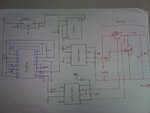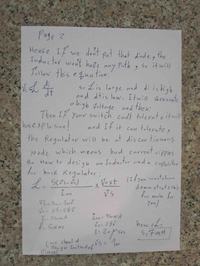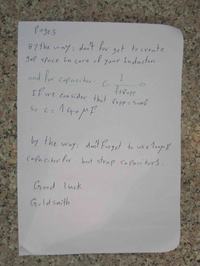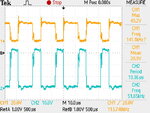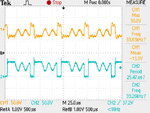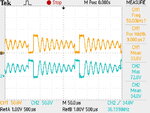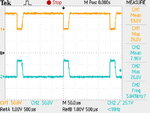haywire
Newbie level 6
hi everyone..
i did post a lot here regarding the same project. sync buck converter for LED driver. initially, the circuit provided very good results.
but after a long time of testing and trying to change this ad that every now and then, the buck converter now won't work. both the IGBT's signal seems to be overlapping and the IGBT heats up causing the circuit to fail.
i wonder why is this happening..
so, i'm left with 2 choices.
1. to go for the conventional buck converter. i did try this one, but the results seems weird because the diode wasn't really functioning. but i could step the voltage down just by changing the cuty cycle.
2. add a dead time to one of the signal. i'm using a TL 494 to two optocouplers. but i don't know how. the reason is, i made 2 pcb boards, one for the signal and one for the buck. is there any way to add dead time after the signal goes out from the opto? or do i need to make a new board?
please advice.
thanks
i did post a lot here regarding the same project. sync buck converter for LED driver. initially, the circuit provided very good results.
but after a long time of testing and trying to change this ad that every now and then, the buck converter now won't work. both the IGBT's signal seems to be overlapping and the IGBT heats up causing the circuit to fail.
i wonder why is this happening..
so, i'm left with 2 choices.
1. to go for the conventional buck converter. i did try this one, but the results seems weird because the diode wasn't really functioning. but i could step the voltage down just by changing the cuty cycle.
2. add a dead time to one of the signal. i'm using a TL 494 to two optocouplers. but i don't know how. the reason is, i made 2 pcb boards, one for the signal and one for the buck. is there any way to add dead time after the signal goes out from the opto? or do i need to make a new board?
please advice.
thanks
